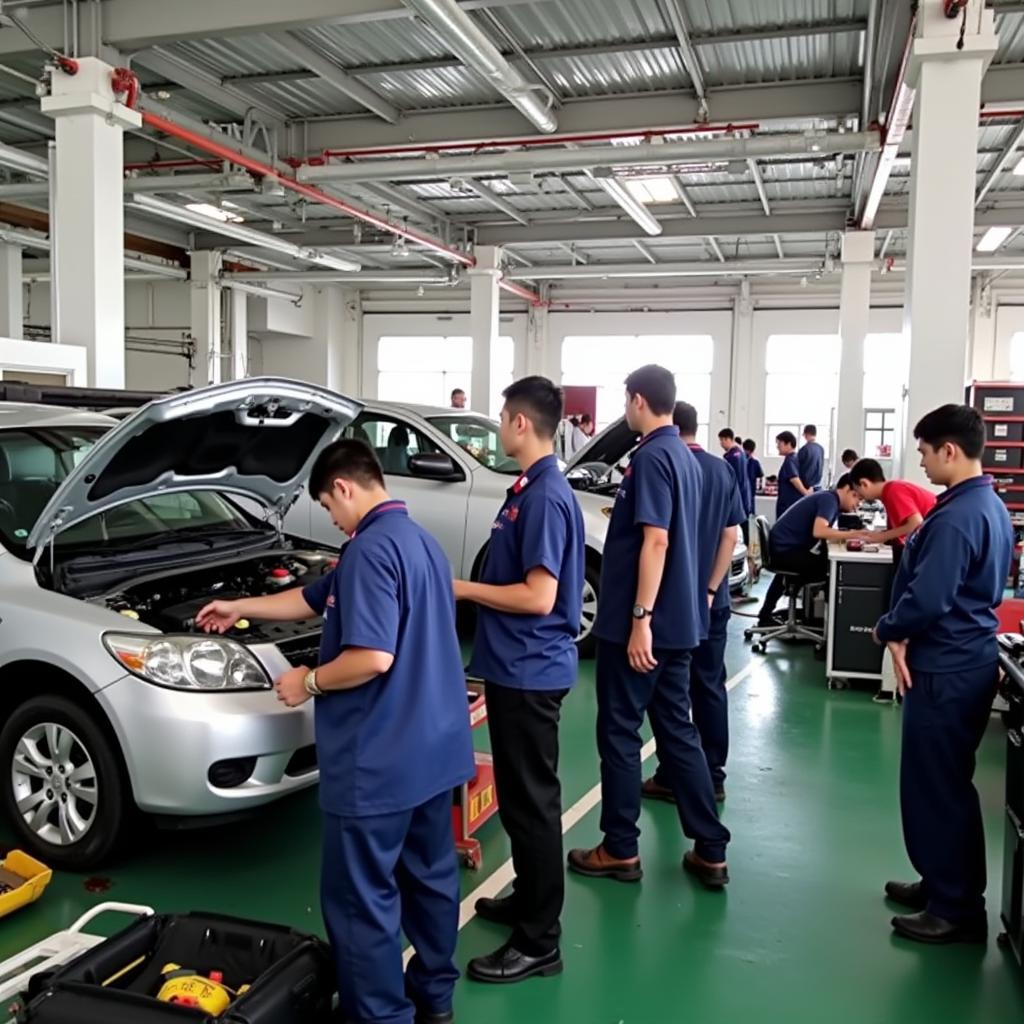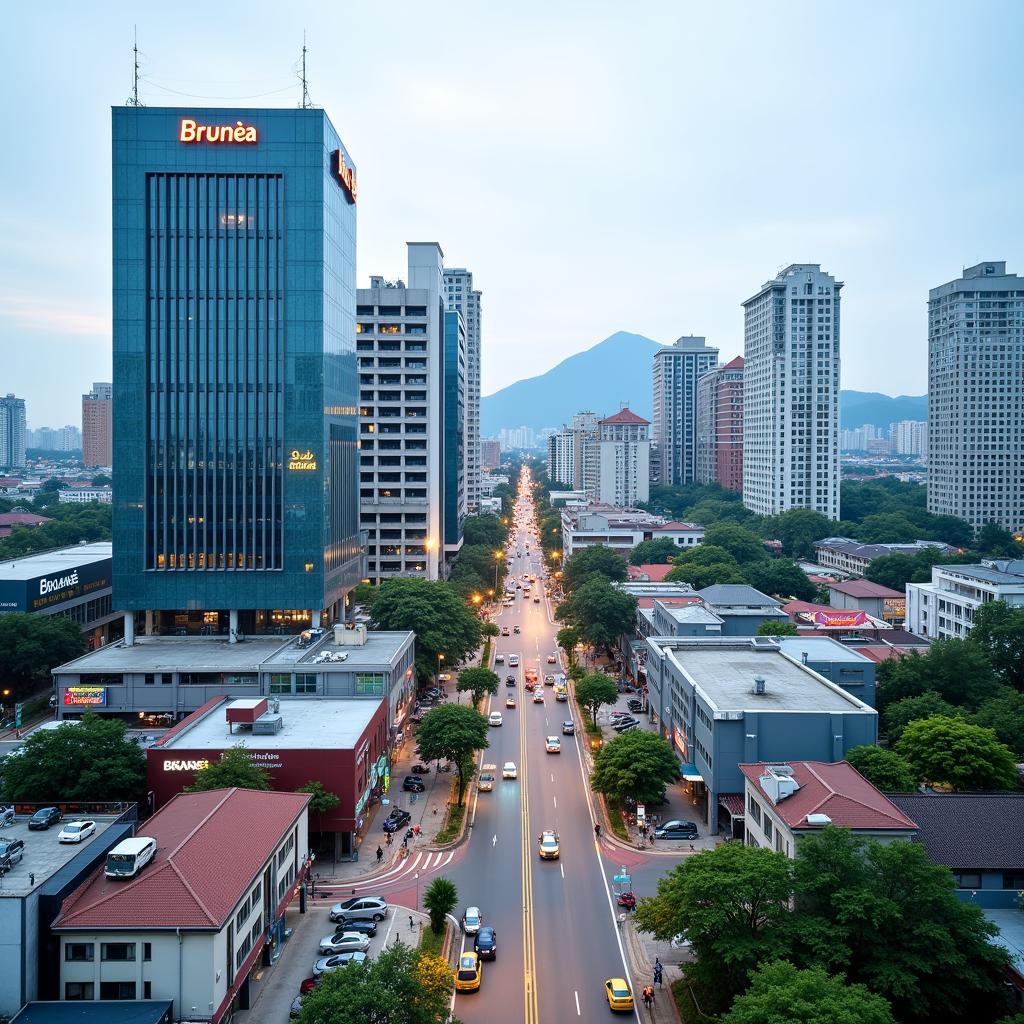The Association of Southeast Asian Nations, or ASEAN, is a dynamic region of Southeast Asia comprising ten diverse nations. This “Asea Wikipedia” guide, presented by Asean Media, will delve deeper into what defines this regional bloc, its history, pillars, and significance on the global stage.
From Discord to Harmony: The Genesis of ASEAN
 ASEAN Founding Fathers
ASEAN Founding Fathers
The seeds of ASEAN were sown in a time of great regional instability. The year was 1967, and the Cold War cast a long shadow over Southeast Asia. Seeking to navigate this tumultuous period, five nations – Indonesia, Malaysia, the Philippines, Singapore, and Thailand – came together to sign the ASEAN Declaration (also known as the Bangkok Declaration) on August 8th. This pivotal moment marked the official formation of ASEAN.
The Five Pillars of ASEAN: A Framework for Cooperation
ASEAN’s strength lies in its commitment to collaboration across diverse sectors. This commitment is embodied in the five pillars of ASEAN:
- Political-Security Community: Fostering peace and stability in the region through dialogue and cooperation.
- Economic Community: Promoting economic integration and creating a single market and production base.
- Socio-Cultural Community: Enhancing people-to-people connectivity, promoting cultural exchange, and addressing social issues.
- ASEAN Political-Security Community Blueprint 2025: Further strengthening ASEAN’s capacity and institutional effectiveness in maintaining peace, security, and stability in the region.
- ASEAN Community Vision 2025: A shared vision for a peaceful, stable, prosperous, and integrated ASEAN Community.
ASEAN’s Expanding Circle: Dialogue Partners and Beyond
From its initial five members, ASEAN has expanded to include Brunei Darussalam, Viet Nam, Lao PDR, Myanmar, and Cambodia. Beyond its borders, ASEAN actively engages with ten Dialogue Partners: Australia, Canada, China, the European Union, India, Japan, Republic of Korea, New Zealand, Russia, and the United States. These partnerships underscore ASEAN’s growing influence in shaping the regional and global agenda.
ASEAN’s Economic Prowess: A Rising Global Force
ASEAN’s economic dynamism has captivated the world’s attention. As one of the fastest-growing economic regions globally, ASEAN boasts a combined GDP exceeding US$3 trillion. The establishment of the ASEAN Economic Community (AEC) in 2015 has further bolstered regional economic integration, facilitating trade, investment, and the free flow of skilled labor.
“The rise of ASEAN is one of the most significant geopolitical developments of recent decades,” states Dr. Wei Ling Lau, a leading economist specializing in Southeast Asian economies. “The region’s economic dynamism, coupled with its strategic location, makes it a key player in the global economy.”
Challenges and Opportunities: Navigating a Complex Landscape
Despite its remarkable progress, ASEAN confronts complex challenges: geopolitical tensions, natural disasters, transnational crime, and narrowing development gaps within the bloc. Yet, these challenges also present unique opportunities for ASEAN to strengthen its unity and resilience.
ASEAN: A Beacon of Hope and Collaboration
ASEAN stands as a testament to the power of collaboration. Through dialogue, consensus-building, and a shared commitment to peace and prosperity, ASEAN has fostered an environment conducive to growth and development. As the world grapples with unprecedented challenges, ASEAN’s model of regionalism offers a beacon of hope and a testament to the power of unity in diversity.
Conclusion
From its humble beginnings, ASEAN has emerged as a driving force in the global arena, promoting peace, stability, and prosperity. This “ASEA Wikipedia” guide provides a glimpse into the multifaceted nature of this dynamic regional bloc. As ASEAN continues to evolve, its commitment to cooperation and dialogue will remain paramount in navigating the complexities of the 21st century.
FAQs About ASEAN
- What does ASEAN stand for?
ASEAN stands for the Association of Southeast Asian Nations.
- How many countries are in ASEAN?
There are ten member states in ASEAN: Brunei Darussalam, Cambodia, Indonesia, Lao PDR, Malaysia, Myanmar, Philippines, Singapore, Thailand, and Viet Nam.
- What is the main goal of ASEAN?
The main goal of ASEAN is to promote regional peace and stability, accelerate economic growth, foster social and cultural development, and enhance regional security.
- Why is ASEAN important?
ASEAN is a key player in the global economy and plays a crucial role in maintaining peace and stability in the Southeast Asian region.
- How can I learn more about ASEAN?
You can visit the official website of ASEAN (https://asean.org/) or explore resources from reputable institutions specializing in Southeast Asian studies.
Need help with ASEAN-related information or have questions about Southeast Asia?
Contact our team at:
Phone: 0369020373
Email: [email protected]
Address: Thon Ngoc Lien, Hiep Hoa, Bac Giang, Vietnam
We’re available 24/7 to assist you!


